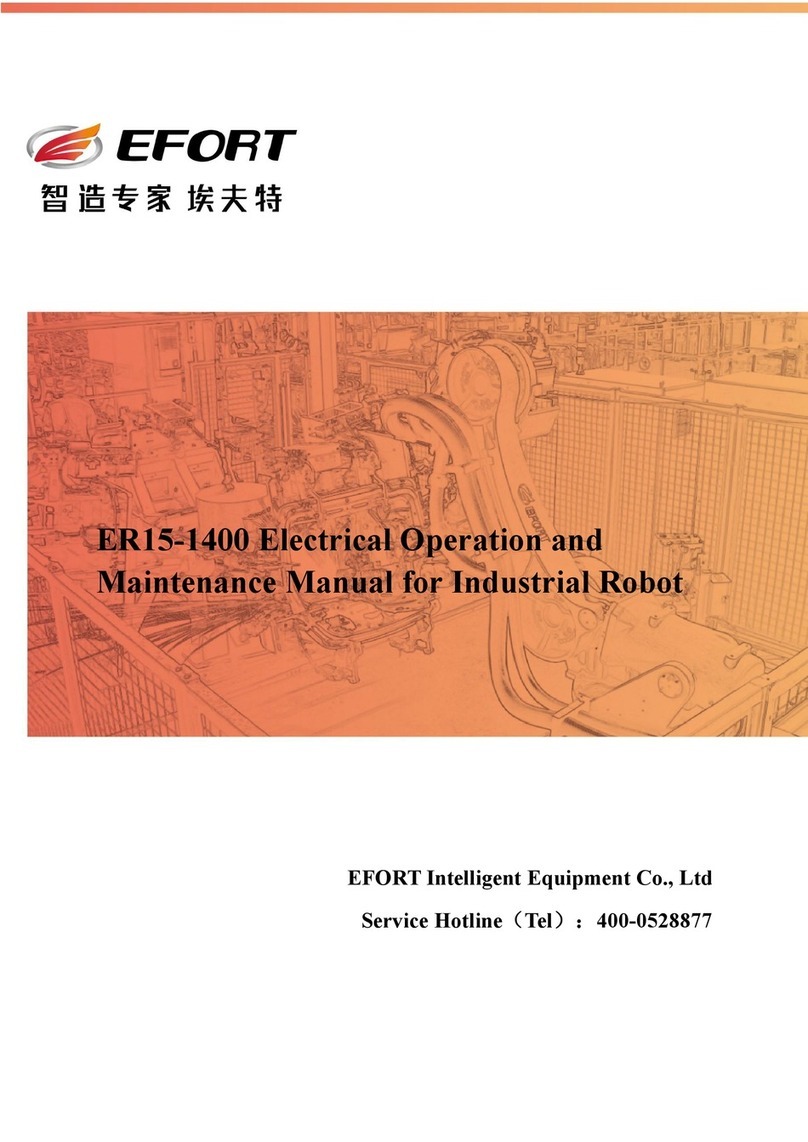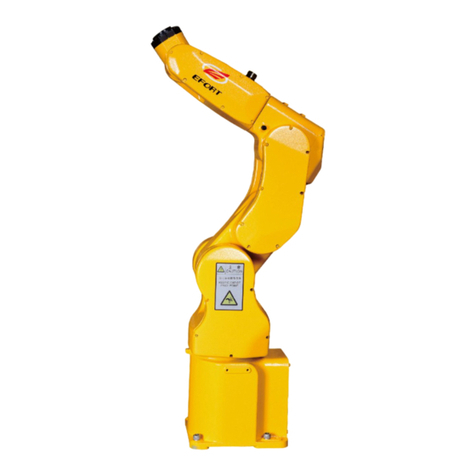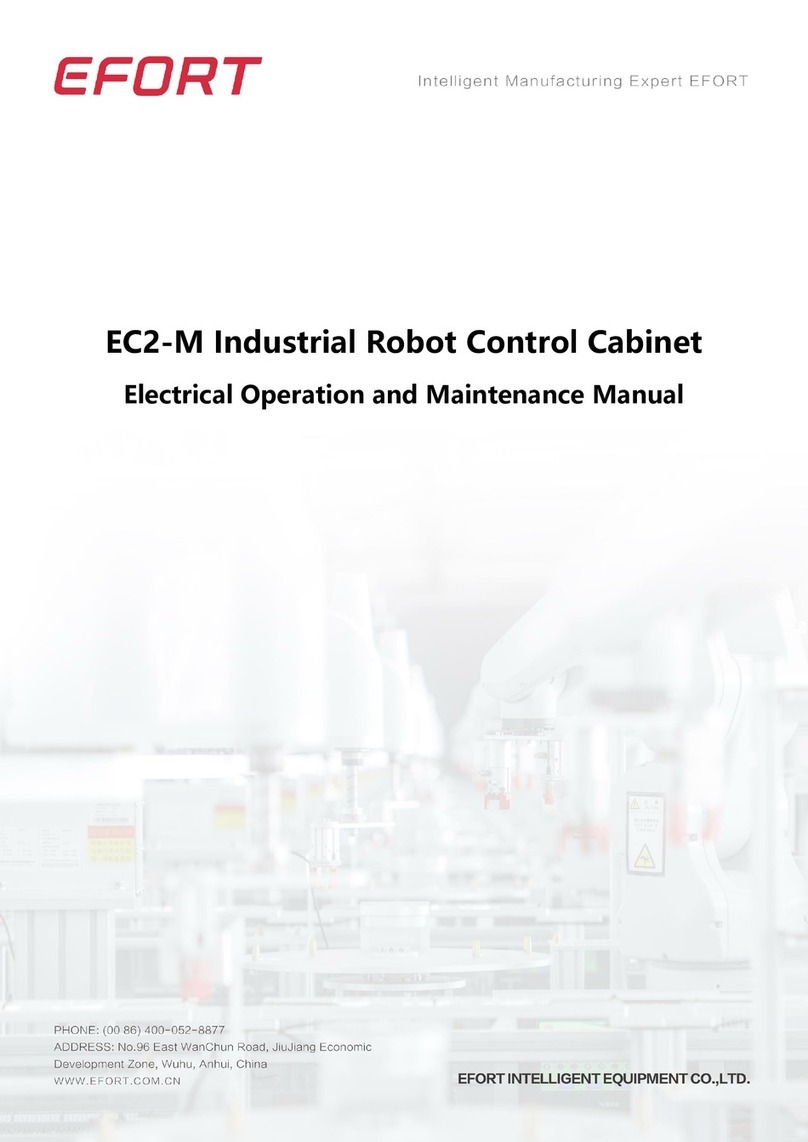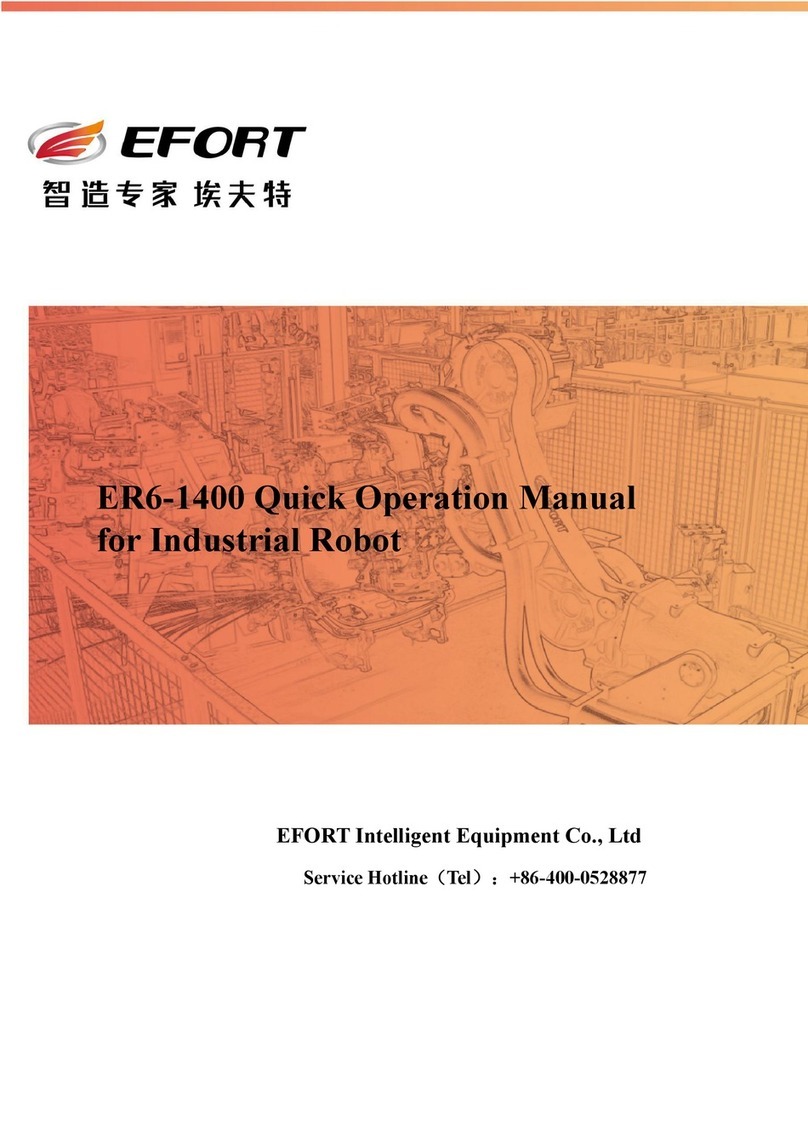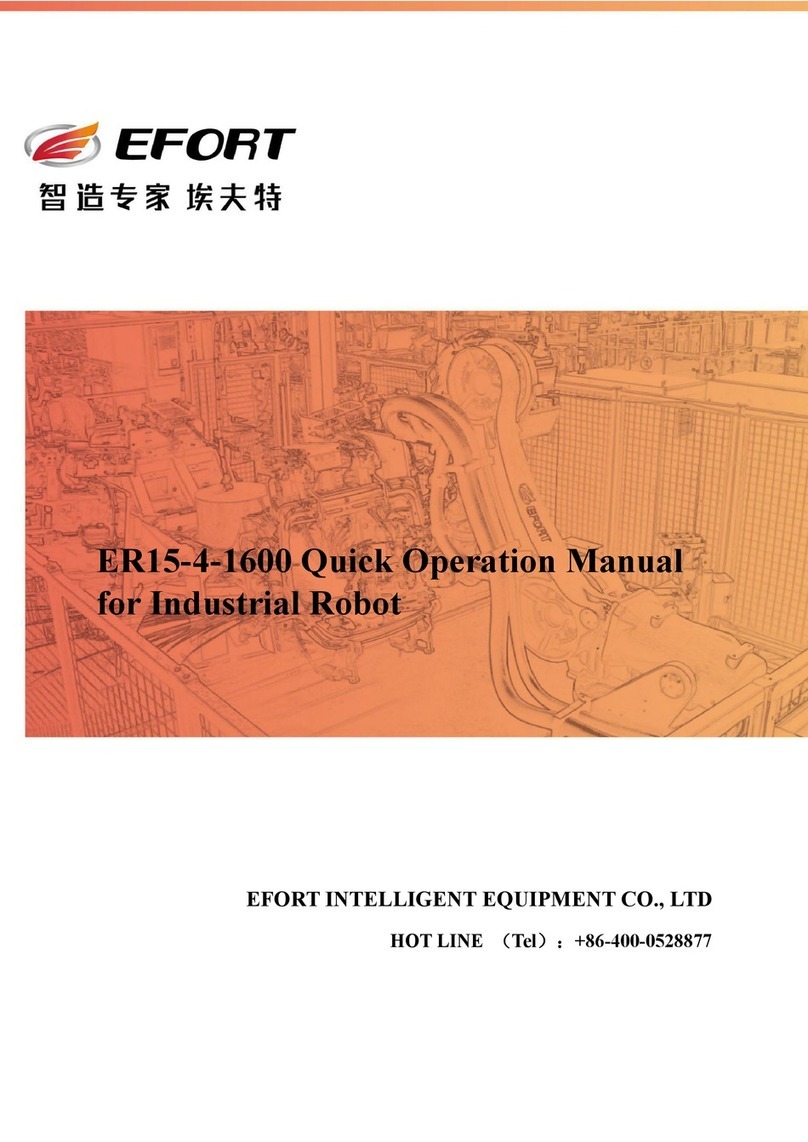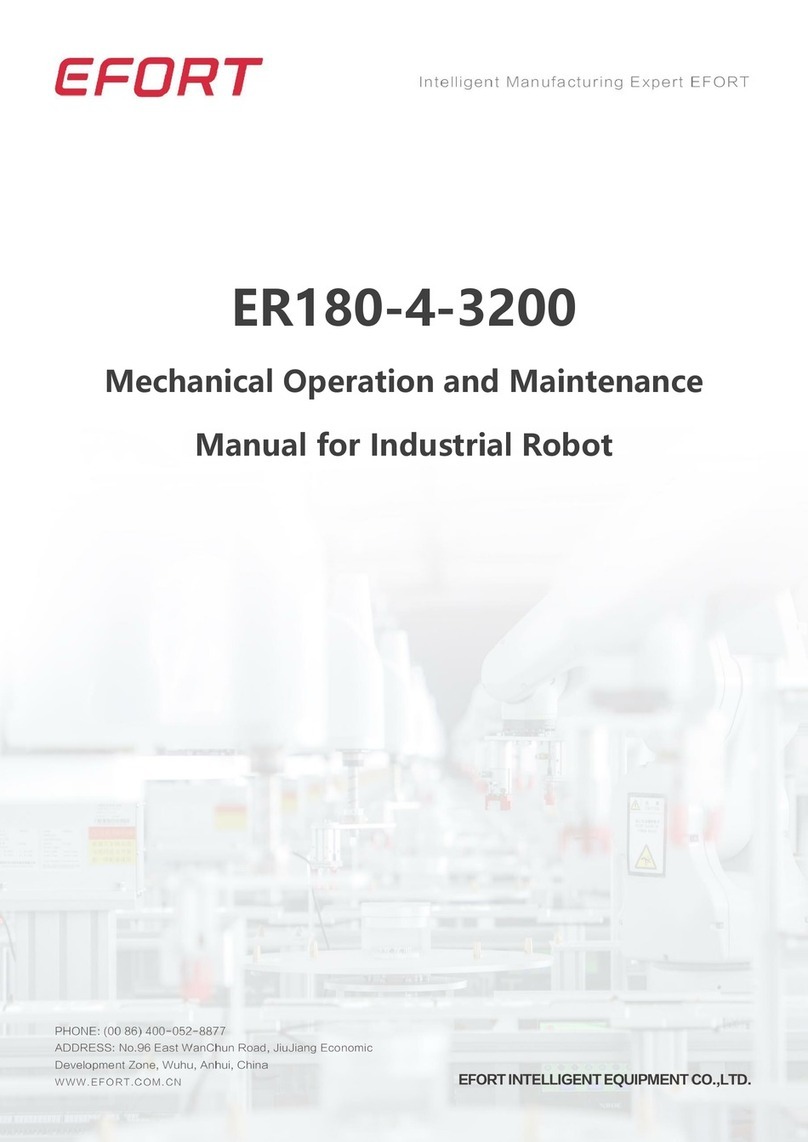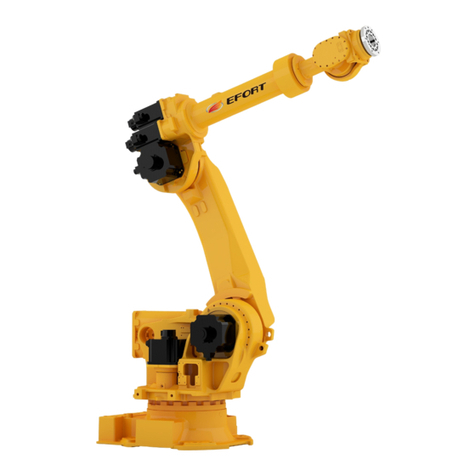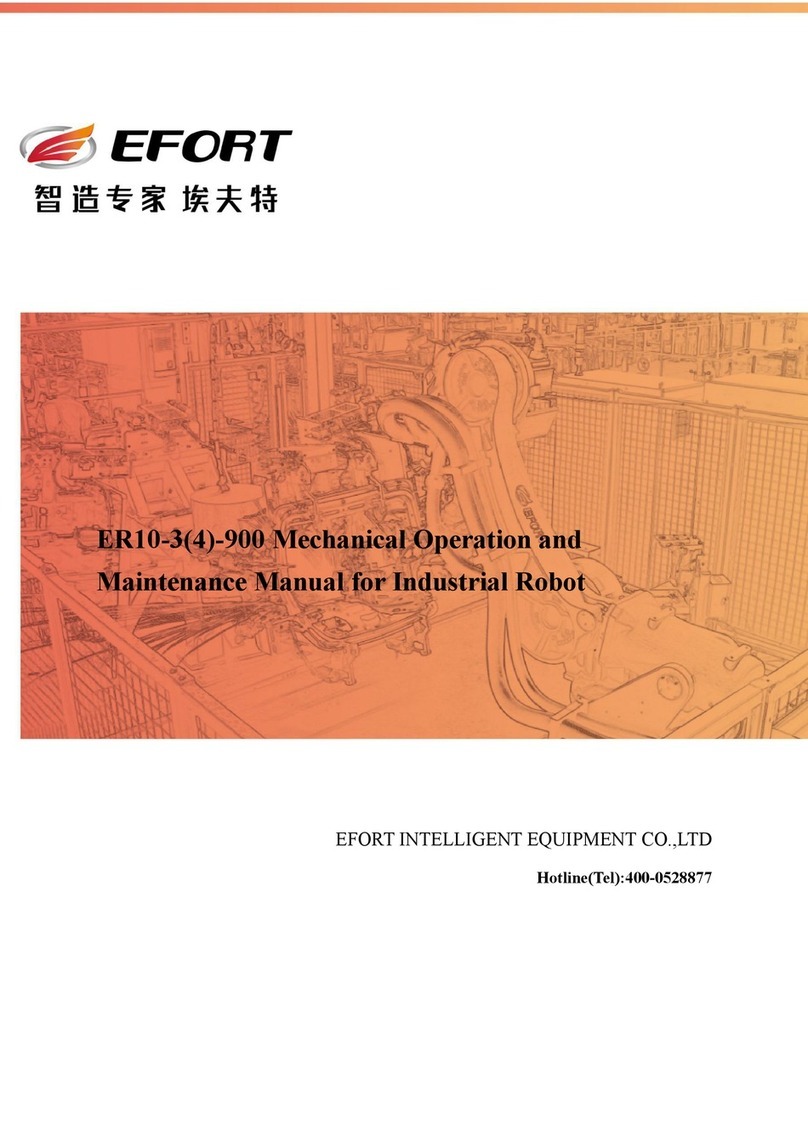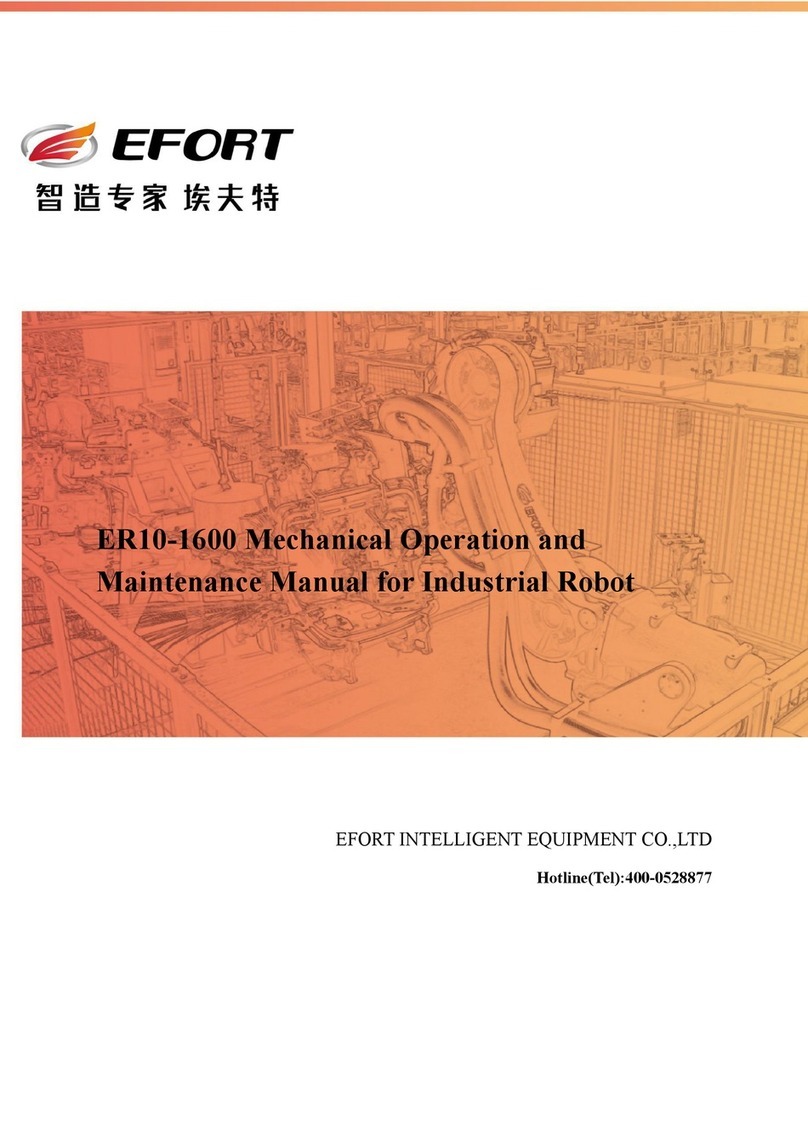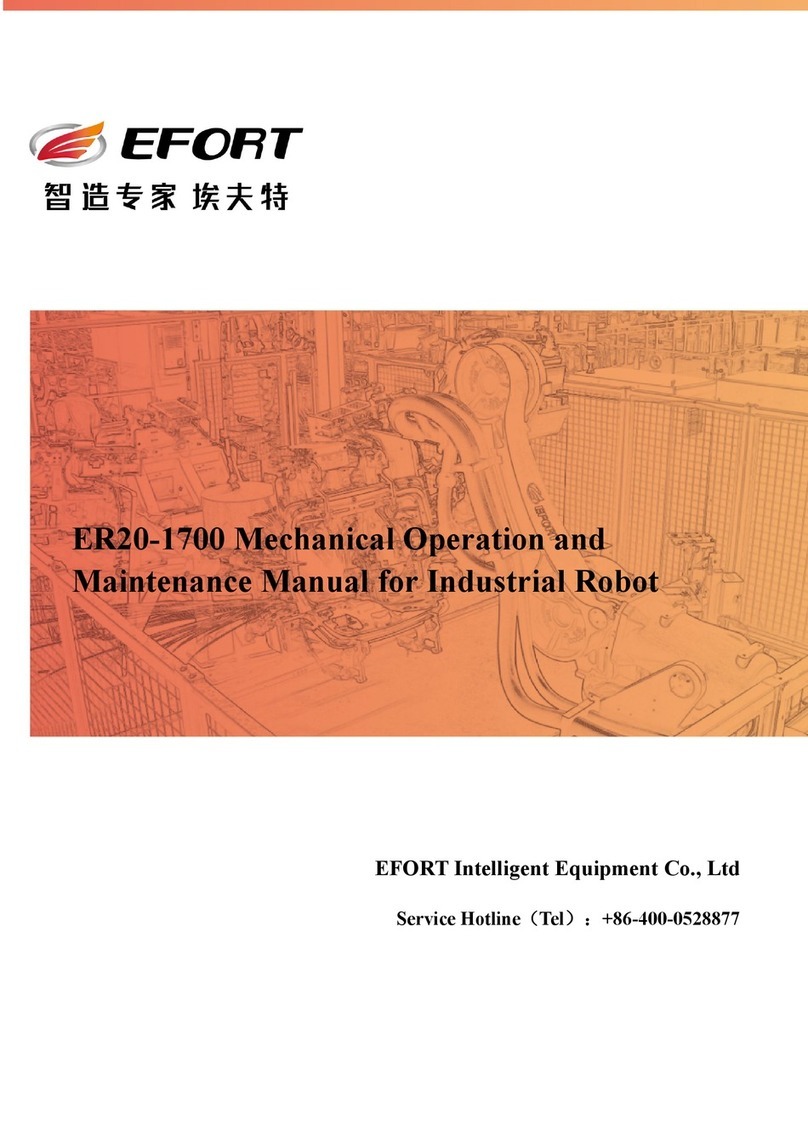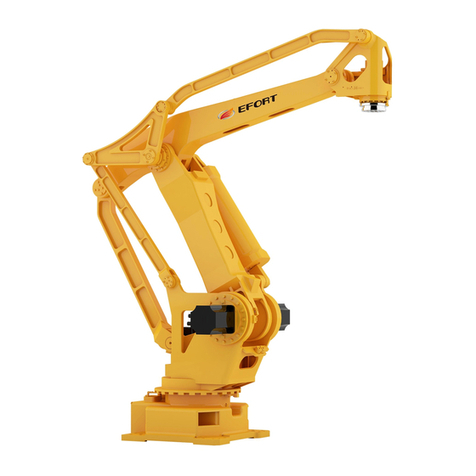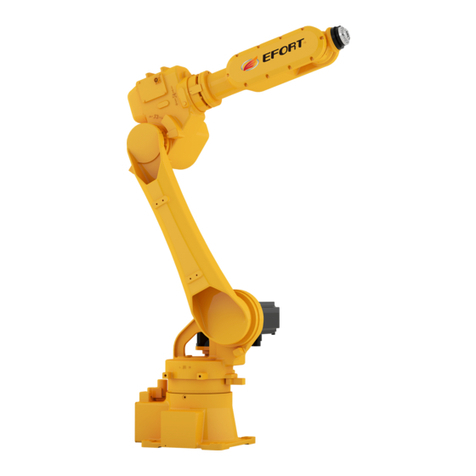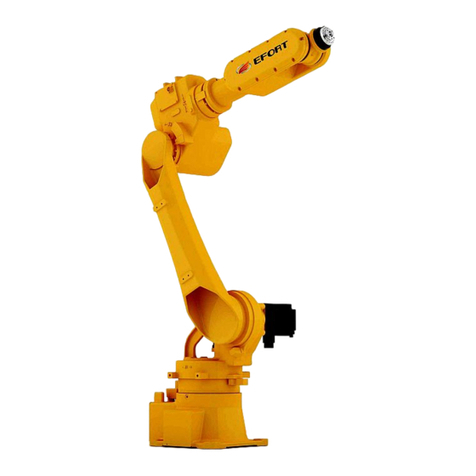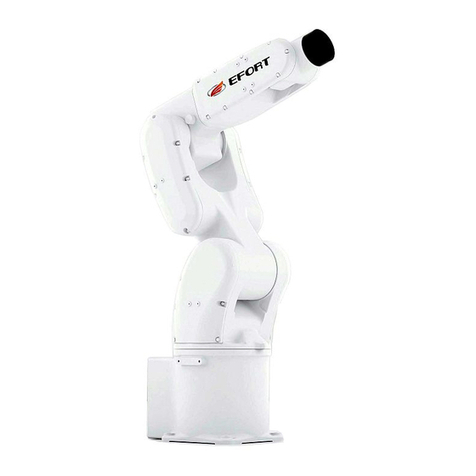
Content
Chapter One Safety............................................................................................................................................1
1.1 Instructions for Safe Use of Robots.....................................................................................................1
1.1.1 Safety Precautions during Adjustment, Operation, Maintenance, etc..................................... 1
1.1.2 Safety Countermeasures of Robot Body.................................................................................. 3
1.2 Robot Body Label Description............................................................................................................7
1.3 Shift, Transfer, and Sale of Robots......................................................................................................7
1.4 Abandonment of Robots...................................................................................................................... 8
Chapter Two Basic Description....................................................................................................................... 10
2.1 Robot system composition.................................................................................................................10
2.2 Unpacking Check...............................................................................................................................10
2.3 Machine Body Nameplate................................................................................................................. 11
2.4 Body Part Composition and Direction Identification of Each Axis..................................................12
2.5 Robot Axis Range Limit and Home Position.................................................................................... 12
2.6 Robot Performance Parameters......................................................................................................... 13
2.7 Allowable Value of Wrist Payload.....................................................................................................15
2.7.1 Allowable Weight................................................................................................................... 15
2.7.2 Allowable Maximum of Static Payload Torque..................................................................... 15
2.7.3 Allowable Maximum of Moment of Inertia........................................................................... 15
2.7.4 Allowable Payload Curve Diagram........................................................................................15
Chapter Three Handling and Installation.........................................................................................................16
3.1 Robot Handling..................................................................................................................................16
3.1.1 Handling Precautions..............................................................................................................16
3.1.2 Auxiliary Handling Tooling....................................................................................................16
3.1.3 Handling Method....................................................................................................................17
3.2 Robot Installation...............................................................................................................................20
3.2.1 Setting of Safety Fence...........................................................................................................20
3.2.2 Robot Installation Method......................................................................................................20
3.2.3 Ground Mounting................................................................................................................... 21
3.2.4 Supporter Installation............................................................................................................. 22
3.2.5 Suspended Installation............................................................................................................23
3.3 Installation Site and Environment..................................................................................................... 23
3.4 Integrated Application Installation Interface.....................................................................................24
3.4.1 End Flange Installation Interface........................................................................................... 24
3.4.2 external installation Interface................................................................................................. 25
3.4.3 Definition of Wrist I/O Single Cable Connector....................................................................25
3.4.4 Location of Pneumatic and Signal Line Interface..................................................................26
Chapter Four Overhaul and Maintenance........................................................................................................28
4.1 Preventive Maintenance.................................................................................................................... 28
4.1.1 Daily Inspection......................................................................................................................28
4.1.2 Quarterly Inspection............................................................................................................... 28
